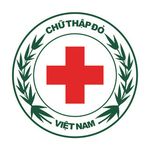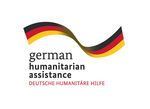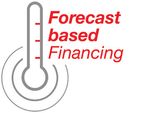Vietnam - Forecast-based Financing
←
→
Page content transcription
If your browser does not render page correctly, please read the page content below
Vietnam
Hanoi
© VNRC
Heatwaves
Forecast-based Financing
Vietnam
Vietnam ranks among the world’s top five nations affected by climate-change
induced hydro-meteorological disasters. Among these, heatwaves pose a
significant public health hazard to vulnerable urban populations such as the
elderly, street vendors, young children and people with pre-existing health conditions, often in care centers
and hospitals. Heatwaves have increased in both frequency and duration over the past 30 years, and are
projected to rise in the future, with pronounced effects in urban areas. Due to global warming and growing
urbanization, heatwaves are likely to increasingly affect densely populated cities and to be reinforced by
the urban heat island effect, which intensifies heat in cities. The German Red Cross and the Vietnam Red
Cross Society implement Forecast-based Financing to minimize heatwave impacts in Hanoi.The concept of FbF
Anticipation instead of reaction: with Forecast-based Financing (FbF), the International Red Cross and Red Cres-
cent Movement is reshaping the future of the humanitarian system. Based on forecast information and risk ana-
lysis, FbF releases humanitarian funding for pre-agreed activities, referred to as early actions. These predefined
measures aim to minimise the impacts of extreme weather events and save human lives. For early actions to
be performed quickly and efficiently before disaster strikes, funds are allocated automatically when a trigger is
reached, based on weather and climate forecasts. This is defined in the Early Action Protocol (EAP). A dedicated
financing mechanism is key for taking fast and effective action before disaster strikes: Forecast-based Action by
the DREF.
The FbF project in Vietnam
The FbF project in Vietnam aims to reduce the adverse includes the VNRC HQ and leadership, the Hanoi
public health effects of heatwaves on Hanoi’s most chapter, and the staff of 8 districts and 15 wards in
vulnerable populations. The project’s primary goals in- Hanoi. In addition, the EAP on heatwaves will be
clude the identification of early actions and capacity scaled up to include the city of Da Nang.
building within the Vietnam Red Cross (VNRC), with • In at least 4 disaster-prone provinces, the local
the aim of applying FbF to further hazards and pro- Red Cross chapters will develop maps to forecast
vinces throughout the region. Thus far, 50 VNRC staff the impact for selected hazards.
members have been briefed on the FbF approach and • At the national level, GRC and VNRC collaborate
methodology, 21 of whom have been trained to commu- with FAO and UN Women to advocate for the repli-
nicate FbF components and steps. The mapping of high- cation and scaling up of the FbF approach on behalf
risk neighbourhoods will support the selection of areas of the Vietnamese government (VNDMA, Province
for project implementation and specific targeting of be- authorities).
neficiaries. In addition, valuable learnings on the appli- • Activations of EAPs will be funded through the Inter-
cation of FbF in an urban context are being gathered national Federation of Red Cross and Red Crescent
and shared with the wider FbF community. Societies’ (IFRC) FbA by the DREF. IFRC will fur-
ther provide guidance and support for procurement,
Planning Monitoring Evaluation and Reporting
Partners and activities (PMER), and finance.
The FbF approach and the EAPs in Vietnam are develo-
ped jointly by VNRC and GRC with support from the Red
Cross Red Crescent Climate Centre.
• Triggers are developed in close collaboration with
the Vietnam Institute of Meteorology, Hydrology,
and Climate Change (IMHEN).
• VNRC will implement the early action when the EAP
is activated and is responsible for the provision of
on the ground organisational and staff capacity. This45.9 %
increase in Hanoi’s respiratory
hospitalisation1
>35 %
loss in productivity among outdoor
workers (in Da Nang)2
45 d/y
of extreme heat in Northern
Vietnam by 20503
Heatwaves
Early Action Protocol:
Heatwaves in an urban context
Urban settings are characterised by high population Map showing wards with different shades of color according to
expected impact.
densities compared to their rural surroundings. This im-
plies that households with a wide range of vulnerability,
exposure, and risk profiles live within close proximity to
one another. Densely populated urban areas thus requi-
re high-resolution local forecasts to predict the oc-
currence of heatwaves with sufficient lead time, and a
high degree of confidence regarding the area affected.
IMHEN has assessed the capacities of – and gaps in –
local forecasts and decided that the 3- and 7-day fore-
casts will be used to trigger the actions of the heatwave
EAP. Given heatwaves’ vast and sudden impact, fore-
casts are supplemented by other data to identify urban
heat island “hot spots”, which may also host the highest
number of people most vulnerable to an extreme heat
event. Additionally, the project conducted an extensive
Knowledge, Attitudes, and Practices (KAP) survey
throughout Hanoi to collect quantitative and qualitative
data regarding current coping capacities of vulnerable
groups, and their level of awareness on heatwave occur-
rence and impact.
Using the findings from these two exercises, the project
determined the appropriate early actions to take in the
event of a heatwave and their location: 15 wards have
been selected (from 8 urban districts), which are at high
© VNRC
risk of negative heat-related public health outcomes,
along with pre-identified early actions (see below) to A local motorbike taxi driver finds refreshment from extreme heat
reach up to 57,000 people in the affected areas. at a Red Cross cooling centre in Hanoi, July 2019.
1
D.Phung et al. 2016, p.7
2
Dao Thi Mai Hoa et al. 2013, p. 23–36
3
Pham Quang Nam et al. 2015, p. 29–30How do heatwaves affect
the population? Heatwave Early Actions
Heatwaves pose a significant public health hazard Based on the KAP survey results, GRC / VNRC
in Vietnam, particularly for vulnerable populations such pre-identified early actions to be implemented in
as the elderly. Heatwave events are associated with a underserved target areas – such as informal settle-
20 percent increase in general hospital admissions, ments – once an extreme heat event is forecast:
46 percent for respiratory diseases. The results of the
KAP survey revealed that 66 percent of persons inter- • Opening community cooling centres (for exam-
viewed that belong to vulnerable groups (elderly, slum ple in local healthcare centres, cultural centres,
dwellers, builders, shippers, street vendors) have ex- Red Cross offices in selected wards, etc.) and
perienced four to six symptoms of heat exhaustion setting up mobile facilities (tents equipped with
during heatwaves. cooling systems) to offer air-conditioned space
Extreme heat also impacts livelihoods. Roughly one third for rest and recovery, first aid services, heat-re-
of KAP respondents reported that their income was re- lated health guidance and water (or other fluids).
duced by 25 to 50 percent, meanwhile the healthcare The centres will be managed by VNRC volunteers
costs associated with heat-related symptoms amounted • The community cooling centres will be complemen-
to 1.5 to 2.5 times their daily income. Although the ma- ted by Red Cross cooling buses which will travel
jority of vulnerable groups have developed adaptation the main streets of Hanoi and direct the vulnerable
measures, only 24 percent could recognize the signs of population to the pre-identified cooling centres
heat-related illness, and 7 percent had access to cool • Retrofitting of houses in informal settlements
environments for prolonged periods of time. (e. g. shading roof installations) and the pro
curement of climate-friendly cooling systems
will also be tested
• In addition, as income was identified as a key bar-
rier to owning, accessing, and using cooling de-
vices, cash distribution to subsidize utility bills
will also be piloted for the poorest households
For more information:
German Red Cross – Headquarters
Carstennstr. 58, 12205 Berlin, Germany
Phone: 0049 30 85404 0
© VNRC
Saving lives, changing minds.
Find out more at
www.forecast-based-financing.org
Survey of Hanoi’s street vendors’ extreme heat coping capacities. and www.ifrc.org
December 2019
These KAP-surveys are used to determine those population groups info@forecast-based-financing.org
most in need of assistance. and www.drk.deYou can also read
























































